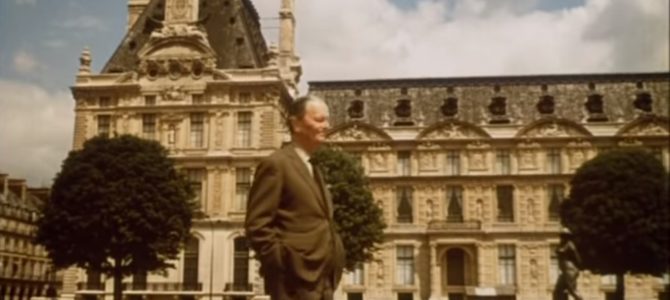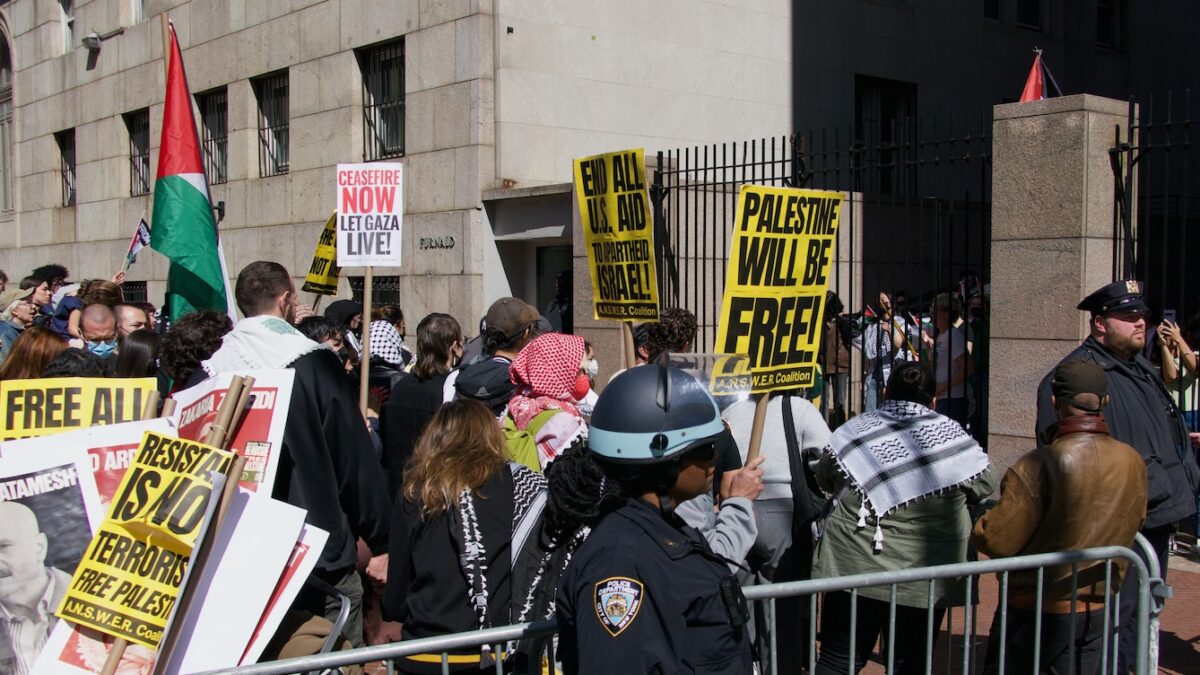
2019 marks the 50th anniversary of “Civilisation,” British art historian Kenneth Clark’s masterful television survey spanning the genius of artists, architects, writers, and philosophers from the “Dark Ages” to the modern day. The weekly installments of the series that totals 13 hours were captured on motion-picture-quality 35mm film, busting the show’s budget but riveting British audiences in the spring of 1969.
It garnered an even larger following on the fledgling Public Broadcasting Service in the United States, making Clark a highbrow cult hero in America. It served as the template for sagas like Carl Sagan’s “Cosmos” and Alistair Cooke’s “America: A Personal History of the United States.” Not bad for a late-’60s program basking in the achievements of dead white males. In fact, that may make the series as relevant as ever.
These days the very word “civilisation” (I’ll stick with Clark’s British spelling) tends to stick in the throat, as people are reluctant to voice the once-effortless assumption that there is a single Western civilisation worth preserving, or even celebrating. That background makes “Civilisation” a half-century old and with a serious-minded reputation, positively edgy in 2019.
Sadly, it’s all too meaningful right now as well. The opening montage of Episode 1, “The Skin of Our Teeth,” includes Michelangelo’s David, Botticelli, The Vatican, St. Paul’s in London, and the Arc de Triomphe, concluding with Clark standing on the bank of the Seine, the Cathedral of Notre Dame in the background, and posing the question he spends the rest of the series answering: “What is civilisation? I don’t know. I can’t define it in abstract terms, yet. But I think I can recognize it when I see it, and I’m looking at it now.”
That scene has acquired tragic poignancy with the devastating fire inside the Cathedral of Notre Dame on April 15. The church, completed in 1345 after over a century of building and thankfully still standing after the fire, has borne witness to eight centuries of French history and is one of the most important symbols of Western civilisation (although left-wing journalists will smear you for noticing). The disaster serves as a tragic reminder of how fragile our “civilisation” truly is.
Clark’s globetrotting took him and his production team to what was by one count 11 countries, 118 museums, and 117 other locations, hitting the highlights of man’s achievement through the lens of men of genius.
Clark, who died in 1983 aged 80, wasn’t the effete elitist his later left-leaning critics made him out to be. Before finding public fame through “Civilisation,” he was indeed a well-known art critic and youngest-ever director of London’s National Gallery, one of many high-level boxes he ticked in High Art circles over his lifetime.
But Lord Clark of Saltwood also had the common touch, or was at least able to mimic it, opening the National Gallery early on the day of a big football match to draw in the public, and keeping the museum open during the Second World War in defiance of the Blitz. The priceless artwork had been shipped off to Wales, but each month, one painting was brought out of storage for exhibition. He also commissioned piano concerts to boost public morale. (He even voted Labour.)
In Clark’s mind, the enemy of civilisation was fear—fear of war, of the supernatural, anything that would make it not seem worthwhile to plant or build or create. The resultant loss of creative energy rendered societies vulnerable to barbarism. Lord Clark really sticks it to the barbarians. Every time he says the word you can sense a liberal wincing. A high-class “Civilisation” drinking game would involve a sip of sherry anytime Clark says “confidence” or “barbarism.”
“The Skin of Our Teeth” serves as a bold opening statement, with Western civilisation barely surviving the (yes) barbarian destruction of the Roman Empire in the fifth century, ushering in what is known commonly as the Dark Ages. The unsettled scene moves to the rugged shores of Iona, an island on the western coast of Scotland, which became the center of Celtic Christianity for four centuries. There, monks and produced illuminated manuscripts, perhaps including the Book of Kells, and, Clark argues, preserved civilisation.
In succeeding parts, Clark chronicles Charlemagne, Gothic architecture, Dante, Botticelli, Michelangelo, Raphael, Leonardo DaVinci, Bach, Rousseau, Wordsworth, Napoleon, and the Impressionists (whew!) among many, many other people, places, and things.
In “Grandeur & Obedience,” Clark celebrates The Vatican as the first great instance of town planning. In fact, Western civilisation was basically the creation of the church, he claims, an institution he admires in a once-removed, clear-eyed way, seeing it as a necessary and force while acknowledging the imperfect, sometimes brutal people who composed the clergy (Clark would enter the church on his deathbed 14 years later).
Among the bits of wry humor scattered throughout “Civilisation” are anecdotes like one demonstrating the insatiable curiosity of Leonardo da Vinci, who, upon discovering a centenarian in a hospital in Florence, “waited gleefully for his demise so he could examine his veins.” Describing Viking gravestones carved with both Christian symbols and those of the Norse god Wotan, Clark cracks, “What’s called hedging your bets.”
Liberal unease with Clark’s patrician style and enthusiastic celebration of (mostly) white men of genius (and perhaps his crack about the “moral and intellectual failure of Marxism”) was evident in the BBC’s 2018 sequel of sorts, “Civilisations,” with the extra “s” signifying woke pluralism. One of the three presenters of “Civilisations” was classicist Mary Beard, who admitted she was uncomfortable with Clark’s “great man approach to art history — one d-mn genius after the next” while reviewing James Stourton’s biography of Clark for (naturally) the left-wing newspaper The Guardian.
Yet the sequel, a kind of corrective, was also an acknowledgment of the enduring power of Clark’s accomplishment. A half-century later, it holds up. If the lingering closeups of art and architecture aren’t quite as fascinating now, blame it on the Internet and 50 years of color television. Clark’s delivery cannot go out of style, because it was never in.
Near the end of the series (which is hosted on YouTube), Clark laid out his own positive philosophical tenets: “I believe that order is better than chaos, creation better than destruction… and I am sure human sympathy is more valuable than ideology.” Points that clearly need rehearing, a half-century on.









